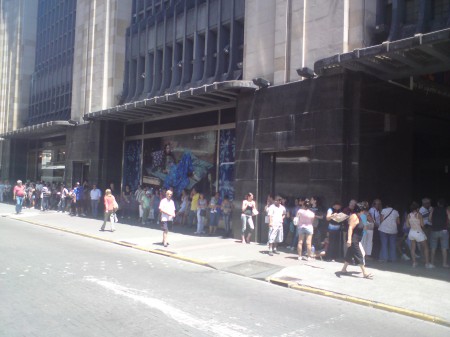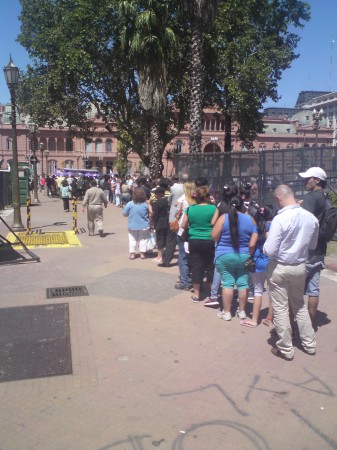The SUBE Card
UPDATE: Note that as of December 2012, bus fares will start at 3 pesos if you do not pay with a Sube card.
 If you’ve been in Buenos Aires over the last few weeks you may have noticed long queues snaking up and down the street outside shopping centres or post offices. I’ve had lots of people on the tour ask me what is going on so an explanation is in order.
If you’ve been in Buenos Aires over the last few weeks you may have noticed long queues snaking up and down the street outside shopping centres or post offices. I’ve had lots of people on the tour ask me what is going on so an explanation is in order.
Buenos Aires does not have an integrated transport system. The 5 Subte lines are run by the same organisation but the 141 bus lines are operated by 90 separate companies and the trains are independent of both. This means that it’s not possible to get a daily, weekly or monthly pass to travel around – you have to buy your ticket every time you travel.
To make the life of the Porteño commuter a little easier, in 2009 the Federal Government launched the SUBE card which can be electronically charged up with cash and then used on the Subte and on the buses, saving time and paper (although not money – the fare is the same as paying cash for each trip). On introduction they set deadlines by which all bus lines should be equipped with readers. These came and went but by the middle of 2010 the vast majority of the city’s 10,000 buses were SUBE friendly.
At the beginning of 2012 things began to change, and change quickly. Early in January it was announced that the cost of a single trip on the Subte would rise from 1.10 to 2.50 pesos, an increase of 127% – effective virtually immediately. Shortly afterwards, a second announcement was made that in order to continue to receive the subsidised cost of a bus or train ticket you would have to pay with a SUBE card, anyone paying with cash would have to pay a new (unannounced) price.
The original deadline for this change was 10th Feb, barely 2 weeks after the announcement was made through a TV advertisement (nobody in the Government made any comment). Cards were being handed out for free, but each one needed to be registered and linked to an individual ID card (or passport), so people started queueing to get hold of a card. They kept queueing as the dedicated SUBE kiosks were only assigned 100 cards each to start with, so stocks quickly ran out. Then the system went down.
After a week of people missing work in order to stand in line for 4 hours to get a card that wasn’t there, it was announced that the application could now be made online. Except the site didn’t work for the first 3 days. They then opened stands in seaside resorts so people could spend their holidays queueing, but they ran out of cards too.
Eventually as frustration mounted on the 9th February, the day before the deadline the Government announced (with a straight face) that despite all the adverts they had produced, Argentinians needed to be a little less “sleepy” and needed to get their hands on a SUBE card and to help them, they would generously extend the deadline to March 2nd. People are still queueing and they still haven’t announced how much a bus journey will be.







[…] improve commuting, in 2009 Buenos Aires initiated a new electronic system for subway and bus fares called SUBE. It’s an understatement to say that SUBE has suffered […]